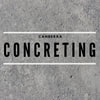|
Concrete is a mixture of gravel, cement, water, sand and various types of aggregates. It is widely used in many construction projects, and it is the most sought-after building material in the world. In fact, about 10 billion tons of concrete are produced each year. This means it is the most consumed substance worldwide, second only to water.
It is also the primary material for building bridges and skyscrapers, so it is the foundation of our infrastructure. Not to mention, 70% of the world’s population are known to live in concrete dwellings. Concrete is one of the most durable building materials available today, so it’s used in structures like pipes, pavements, floor slabs, pillars and beams. However, the massive consumption of concrete around the globe has made it an active contributor to greenhouse gas emissions. That is why there is a pressing need for the construction industry to go through a green revolution when it comes to using concrete and even timber - learn more here. Therefore, enterprises must now adapt to the current climate condition and the phenomena of global warming. They must now introduce environmental-friendly materials. Fortunately, the concrete sector has found some sustainable and eco-friendly alternatives to concrete, now known as green concrete. What is green concrete? Green concrete is a type of concrete that is manufactured using residual or waste materials from various industries. This makes it an eco-friendly alternative because it requires less energy to produce than traditional concrete. It’s also more cost-effective and is durable like standard concrete. The main purpose of green concrete is to increase the dependency on recyclable materials and lessen the burden on natural resources. That is why the concreting industry is utilising multiple strategies to achieve sustainability through green concrete. Some of these materials include the following: AshCrete This is a by-product of combustion from coal and commonly discarded in the landfill, but it now being used to manufacture green concrete. AshCrete and fly ash can be mixed with water and lime to produce a durable material, similar to conventional cement. These two materials can reduce CO2 emissions and 25% of cement can be replaced by using fly ash and AshCrete. Blast Furnace Slag Blast furnace slag is another by-product that can be recycled and used to make an environmentally friendly alternative to concrete. This material can be produced from molten iron slag that was quenched from the blast furnace and into steam or water. Micro silica This material is also called silica fumes and is an ultrafine powder by-product of ferrosilicon alloy. Micro silica is known to boost and improve the durability of concrete and makes it less absorbent, and it can also increase its compressive strength. Overall, concreting technology will develop and improve more in the coming years, which could also boost green concrete production. We all want a better environment, and green concrete is a viable alternative to standard concrete. Concrete is a popular building material used in various construction projects. It is known for its durability and is easy to maintain in comparison with other building materials such as timber. So, to extend the life of your concrete surfaces like those on your driveway, countertop, patio, and other concrete surfaces, it is essential to know the proper way of cleaning them.
There are several ways of cleaning concrete, but it all depends on the type of surface and the level of stain, dirt, and debris. Here are some tips that can help you effectively clean your concrete. Pressure washer If you want to clean your outdoor concrete, the best and easiest solution is to pressure wash it. In fact, it is the best method for removing dirt, stains, and other elements that made your concrete surface less stellar. It is recommended that you use a fan tip on your pressure washer, but it should not exceed 2,500 psi for optimal performance. You can also use hot water to break up dirt and debris on your concrete pavement. Also, for tougher stains, especially on your driveway floors like grease, oil, and soot, it is better to use a degreaser before you pressure wash it. This will soften the stain on the surface, and you can then easily remove it using your pressure washer - making your concrete look clean and attractive. Scrub brush For indoor concrete, it is best to use a scrub brush because a pressure washer may not be the ideal equipment inside your home. You may also need to use hot water to soften up tough dirt, so you can easily remove it with the brush. Lastly, you can combine your scrub brush with a degreaser to remove harder dirt and stains. Trisodium phosphate (TSP) This is a heavy-duty cleaner that can easily remove dirt, soot, and grease on concrete surfaces. You can easily buy TSP at Home Depot and local hardware stores. It is a good companion for your pressure washer because it can provide better results than a standard degreaser. Oxalic acid If you want to remove rust and other stains on your concrete surface, you will need to use oxalic acid. This solution is often sold in local home improvement stores. It is usually sold in powdered form, so you will need to dissolve it in hot water. Concrete Sealer This compound is the most commonly used solution for protecting concrete from rust and stains. In fact, you can easily apply it to any concrete surface. Once it has cured on your concrete surface, it will now serve as a shield to protect your surface from dirt, debris, soot, and oil that may cause it to become weak or discoloured. Overall, cleaning your concrete surface will ensure that it will stay pristine and look good for many years to come. |
AuthorWrite something about yourself. No need to be fancy, just an overview. Archives
April 2024
Categories |

 RSS Feed
RSS Feed